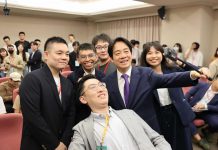Li says the government’s focus on new residential developments means it attaches little importance to the need for adequate and appropriate sports and recreational facilities in the various districts.
“If the government is not planning to build residential buildings in the area, why would it have the incentive to construct a swimming pool for you?” he says. To him, the building of sports facilities has now become a bargaining chip when the government wants support for building new residential blocks.
The cases of Tai Po, Tin Shui Wai and Sai Kung illustrate some existing problems with the building of sports and recreational facilities. In these cases there are neither sufficient nor adequate facilities to meet local demands. However, there are also instances where people have complained of the excess supply of certain facilities.
For instance, the LCSD currently manages more than 40 gateball courts. Gateball is a game played with a mallet, similar to croquet, and is mainly enjoyed by the elderly. According to a written reply from the LCSD, the utilisation rate of these courts is on average around 40 per cent, way lower than for other facilities such as badminton courts and swimming pools.
Some attribute the low usage rates to two reasons. First, these gateball courts only accept bookings in person, lowering the incentive of residents to use the facilities. Second, the LCSD is not flexible in managing these courts in that they are not made available for other uses.
However, according to the LCSD, these courts are supposed to be open for other uses. This is echoed by Catherina Lau Lee Lai-fong, the chairperson of the Hong Kong, China Gateball Association, who says that “courts are now opened by the LCSD to the public after complaints in 2014.”
Varsity called various gateball courts as a member of the public to ask whether or not the courts are available for other uses and received a wide range of responses. One LCSD staff member from Sha Tin District said gateball courts could only be used for specific purposes, therefore other uses, such as playing badminton are prohibited. Meanwhile, a staff member from the Tuen Mun District said it takes up to two to three months to get approval to use the courts for other purposes.
Although the LCSD has set up guidelines for the usage of gateball courts in all districts, it does not necessarily benefit citizens and the low utilisation rates of gateball courts continues to be a problem.
It does not always have to be this way. Sai Kung Islands district councillor Philip Li cites the case of a squash court in Sai Kung which was under-utilised. It was later turned into a table tennis court to meet the needs of local residents. Li says this shows it is possible for the LCSD to listen and respond to public opinions.
In recent years, the government set up various community programmes such as the Community Sports Club Programmes and the District Sports Teams Training Scheme. They aim to promote “Sport for All” and to encourage people from all backgrounds to maintain active and healthy lifestyles within the community.
However, to Kwok Hing-ping, district councillor for Yat Chak in Yuen Long, you need more than just slogans and signature campaigns to create healthy communities and competitive athletes. “The Chief Executive said he wanted to improve the quality of athletes in Hong Kong, but you just don’t have the right facilities to help them,” he says. “LCSD is saying one thing, but doing another.”
Edited by Mavis Wong






































